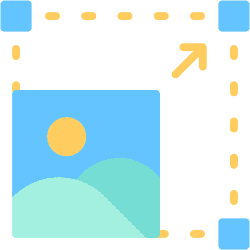Oppenheimer Capital Canvas Design System

My Contributions
4 months, 2023.09
Figma /Zeroheight/ Google Workspace
Xinru, Scott, Jiafeng
About
Oppenheimer Capital Canvas is a proposed design system that has been created by a team of three Pratt Institute Graduate Students for Oppenheimeer& Co.Inc. The primary aim of this system is to increase accessibility and encourage consistency among the design team. We hope to improve scalability and enhance brand experience. Moreover, the system has been designed to provide a user-friendly experience for design teams, which adheres to the principles of logic design, minimalism, scalability, and consistency.
Why does Oppeheimer need a design system?
Oppenheimer, a global brokerage and investment bank with 140+ years of history, is renowned for delivering innovative and tailored financial solutions. In the dynamic financial landscape, clarity and consistency are crucial. Hence, the need for a robust design system at Oppenheimer is evident. This system serves as a foundational framework, ensuring cohesive visual identity, interfaces, and experiences. By empowering our team with a design system, we enhance usability, reinforce brand identity, and prioritize accessibility. This approach ensures that our platforms are not only visually excellent but also universally inclusive for all stakeholders, from individual investors to corporate executives and institutions
UI Inventory
Deconstruction

Design Principle
Atomic Design Methodology

UI Kit
Color Platte

Typography

Aspect Ratio

Documentation
We utilized ZeroHeight , a collaborative platform integrated with Figma, to document our system for potential users and collaborators. This documentation encompasses all the essentials and specifics, guiding users from getting started to implementing Simula for their design purposes. Bringing a design system to life involves documenting the created elements, putting the design into words to create a central repository. Our team created comprehensive documentation covering design principles, accessibility standards, components, and best practices for designing.
Takeways
Prioritizing Accessibility from the Outset:
Incorporating accessibility from the beginning is essential, ensuring a streamlined workflow and eliminating the need for subsequent redesigns.
This proactive approach contributes to a more inclusive and user-friendly design system.
Iterative Improvement:
Recognizing the value of iterative improvement, especially in refining naming conventions for complex components within the system.
The project's retrospective suggests considerations for enhancing team collaboration and system understanding.
Advanced Features and Efficiency:
Emphasizing the significance of learning advanced features, particularly auto-layouts in Figma, to increase design speed and implementation efficiency.
The investment in creating variants and properties, while initially demanding, results in a flexible and easily updatable design system.





